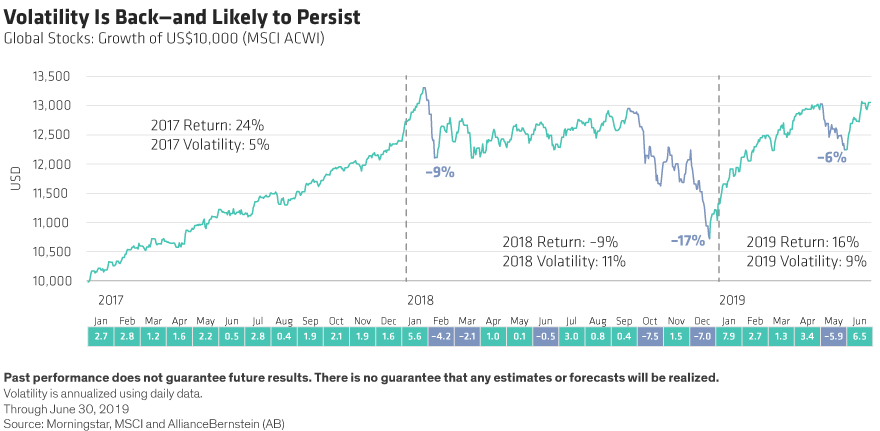In the fourth quarter of 2018, many equity investors had good reason to feel anxious. Stocks were falling sharply, and by late December, US and global equities had tumbled by 20% and 17% from their respective September peaks. News headlines warned of recession and an imminent bear market. Amid the noise, it may even have seemed sensible to reduce or exit an allocation to stocks.
Those who did would regret the decision just a few months later. By the beginning of the second quarter in 2019, stock markets had recovered their losses from the fourth quarter of 2018. Despite the renewed confidence, many investors still feared the potential for further uncertainty to derail future returns. Even in a rising market, the anxiety caused by large market swings is very unsettling and may even cost investors money if they feel compelled to act in the midst of short-term events.
In this paper, we aim to provide a holistic perspective on a challenge that has vexed investors for decades: managing volatility in equity portfolios. By examining the root causes of volatility, we aim to provide a broader perspective on risk-management solutions for today’s complex environment. Distinguishing between market risk, factor risk and stock-specific risk can help investors identify the most appropriate strategic solutions to combat volatility and ensure that they are compensated for the risk in their equity portfolios.
Staying Invested Through Bouts of Turbulence
Equity market turbulence is nothing new. During the 10-year bull run since the end of the global financial crisis in early 2009, markets have been especially calm for prolonged periods because of the easy-money policies of central banks. The MSCI ACWI posted volatility of 5% in 2017, capping a six-year period of below-average volatility. The following year, volatility jumped to 11% (Display). Persistent volatility is widely expected in the years ahead because of the potential slowing of the economy, uncertainty over interest rates and monetary policy, and heightened political risks.
By identifying the sources of volatility, active managers can improve an investing experience and help investors stay in the market through bouts of turbulence. Reducing the noise that interferes with an investing plan is the key to remastering portfolios and realizing the benefits of long-term equity returns.
